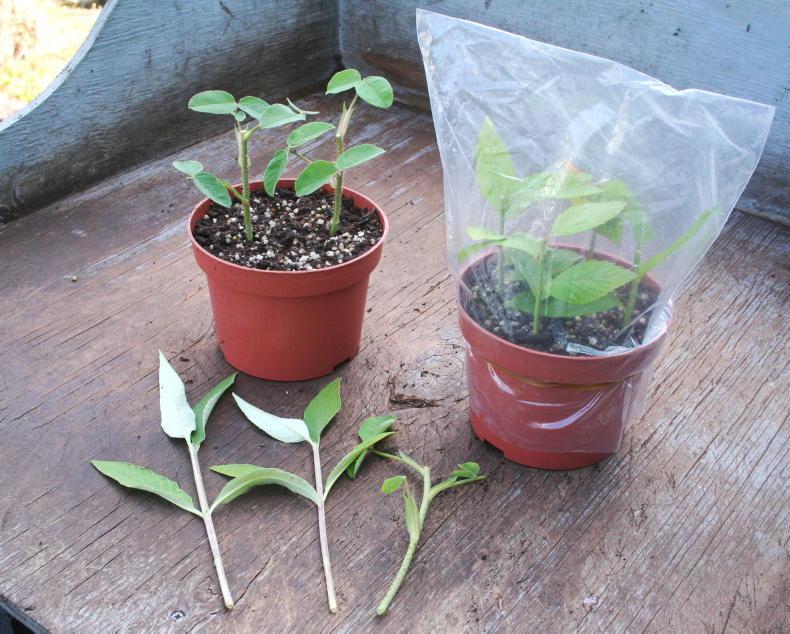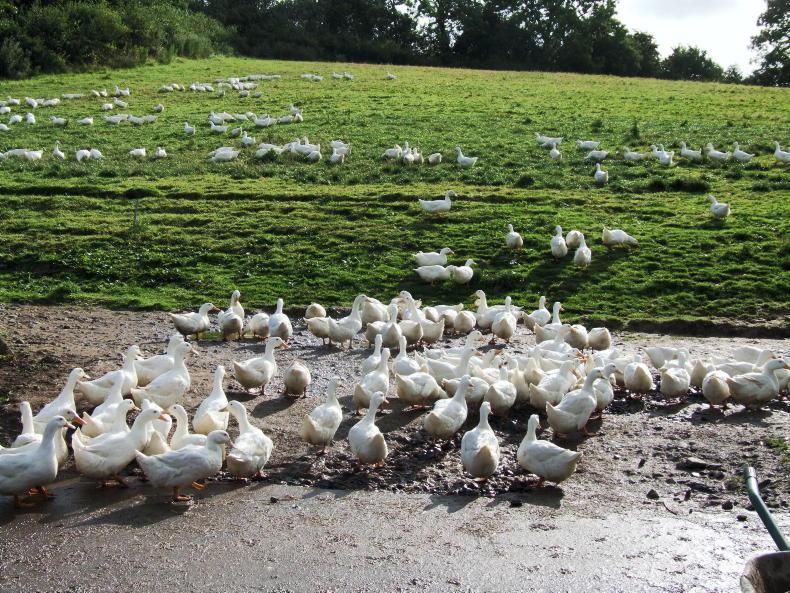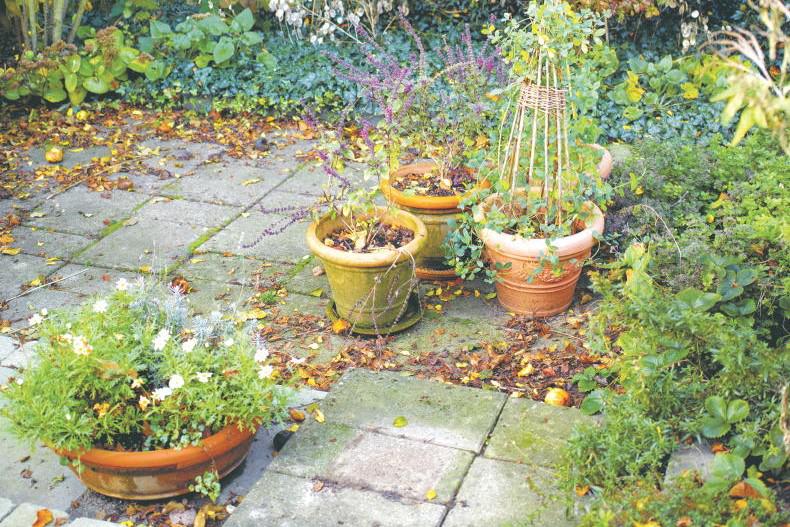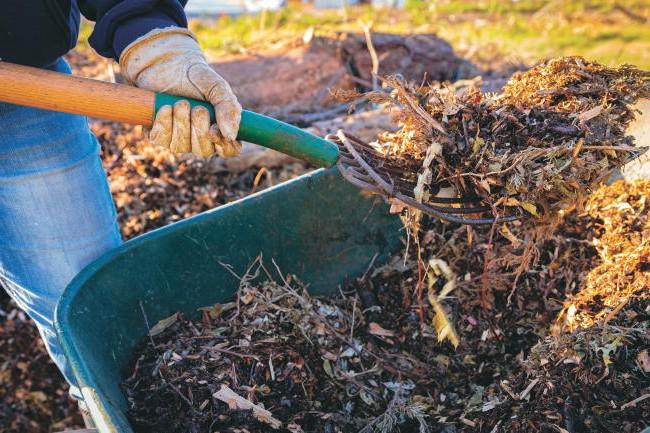As part of last year’s Carlow Garden Festival, which is held annually during the last week of July, I went along to lead a walk and talk event at the Delta Sensory Garden in Carlow.
Having not been there previously, I arrived early to familiarise myself with the plants and layout. After a quick first lap through the series of interconnecting gardens, each a different style, the second lap revealed an inspirational wealth of clever detailing and little surprises at every turn.
All five senses were engaged with enticing sounds, scents and textures, tastes to delight, pleasing plant combinations and some amazing pieces of sculptural art by Bob Frazier to create visual interest.
It’s a happy, feelgood place that makes the visitor slow down and connect with nature, relieving stresses and calming the mind.
So, how do you plant yourself happy and recreate the experience and benefits of a sensory garden at home? In our own garden, we have many elements that help to evoke a sense of calm and prompt engagement with nature — we just don’t refer to it as a sensory garden.
At this time of year, the rich fragrances from roses, philadelphus, climbing honeysuckle and jasmine are all olfactory delights. Trickling water is such a soothing sound as is the gentle rustling of ornamental grasses, the crunching of gravel underfoot or the hum of happy insects as they feed from their favourite nectar-rich flowers.

A favourite spot to sit and unwind in Mary’s own garden.
Who can resist stroking the furry leaves of lamb’s ears, Stachys lanata, or the shiny bark of a Tibetan cherry, Prunus serrula? The experience of moving between sunny and shady areas offers temperature contrast, while edible flowers such as nasturtiums or violas, herbs or small fruit bushes incorporated into borders present “pick and eat” opportunities.
Walkways that wind through the garden slow the pace and invite exploration and considered placement of seats are destinations to relax, talk, reflect and become immersed in all the garden has to offer.
There is no need for acres of land to make a garden that will appeal to all the senses and promote health and happiness. A scented hanging basket, a collection of tactile plants in containers, a set of wind-chimes, a bird-feeder or a simple herb-edged pathway are just as capable of providing you with invigorating experiences in a small garden as well as large.
Take cuttings now
Many climbers, roses, shrubs and tender perennials are easy to root from cuttings taken at this time of the year.
In our small nursery, this is peak time for propagation by semi-ripe cuttings- the bases of the cuttings are beginning to harden while the tips are still soft.

We take the cuttings early in the day when shoots are full of moisture, choosing healthy, non-flowering shoot tips of the current season’s growth. Use a sharp secateurs to cut just below a leaf joint and cut again just above a leaf joint to remove the soft tip, aiming to create a finished cutting of 8cm to 10cm long.
Remove the lower leaves, leaving one or two pairs intact. Dip the end in hormone rooting powder and insert into pots of moist, gritty compost.
Cover with a clear polythene bag held in place with a rubber band to maintain high humidity until rooted. Place the pot in a warm, well-lit position indoors, but out of direct sunlight. Keep compost moist. Most cuttings taken now should root within four to eight weeks.
Remove the polythene bag once a day and shake out excess water to ventilate and prevent conditions becoming too humid inside as this may cause cuttings to rot.
Once rooting starts, cut holes in the bag to reduce humidity and remove it after two weeks.
Repot rooted cuttings into potting compost in spring.
This month’s to-do list
Early summer flowering hardy geraniums can look a bit tatty by now, so we cut back the flowered stems and tired-looking foliage down to the base around mid-July. Give the plants a liquid feed and, within a couple of weeks, fresh new foliage and sometimes a second flush of flowers will emerge. Deadhead roses regularly to encourage more blooms to form, except on varieties that are valued for their autumn fruits. Stems that have completely finished their first flush of blooms should have the faded flower head, and the stem beneath it, cut back to the first outward-facing leaf with five leaflets. Collect and sow seeds of early flowering plants such as aquilegias, foxgloves, and poppies.Timely Reminder
Divide congested clumps of bearded irises once they have finished flowering to invigorate the display for next year.

"Distant Chimes" iris.
Cut back the old flower stems, then dig them up and use a knife to divide the fleshy rhizomes into smaller sections, cutting away any rotten or dead parts. Make sure there is a fan of leaves on each section. Reduce their leaves by half to prevent wind rock. Plant them back, keeping the rhizome exposed on the surface.
Out and About
Friday 15 July, Belvedere Gardens Unusual Plant Fair. Time: 10am to 6pm. Venue: Belvedere House and Gardens, Mullingar, Co Westmeath. Specialist plant nurseries and talk by special guest Jimi Blake. Friday 22 July to Monday 1 August, Carlow Garden Festival. Venue: Gardens and garden centres along the Carlow Garden Trail. A 10-day programme of events that includes a tempting lineup of internationally acclaimed speakers from the UK and Ireland delivering a mix of workshops, garden tours, specialist talks and Q&A sessions. There’s also a range of foodie events that includes long table suppers, afternoon tea and evening meals in gardens and garden centres in Carlow. More information: www.carlowgardentrail.com.
Sunday 31 July, Farmleigh Plant Fair. Time: 10am to 5pm. Venue: Farmleigh Estate, Phoenix Park, Dublin. Specialist plant nurseries and other stalls selling garden-related items. Gardening talks and floral art demonstrations during the day.Mary Keenan and Ross Doyle run Gash Gardens, Co Laois, open to the public. www.gashgardens.ie
Read more
A warm welcome to Mary’s garden
Mary's Garden: Embracing shade and tantalising tulips
As part of last year’s Carlow Garden Festival, which is held annually during the last week of July, I went along to lead a walk and talk event at the Delta Sensory Garden in Carlow.
Having not been there previously, I arrived early to familiarise myself with the plants and layout. After a quick first lap through the series of interconnecting gardens, each a different style, the second lap revealed an inspirational wealth of clever detailing and little surprises at every turn.
All five senses were engaged with enticing sounds, scents and textures, tastes to delight, pleasing plant combinations and some amazing pieces of sculptural art by Bob Frazier to create visual interest.
It’s a happy, feelgood place that makes the visitor slow down and connect with nature, relieving stresses and calming the mind.
So, how do you plant yourself happy and recreate the experience and benefits of a sensory garden at home? In our own garden, we have many elements that help to evoke a sense of calm and prompt engagement with nature — we just don’t refer to it as a sensory garden.
At this time of year, the rich fragrances from roses, philadelphus, climbing honeysuckle and jasmine are all olfactory delights. Trickling water is such a soothing sound as is the gentle rustling of ornamental grasses, the crunching of gravel underfoot or the hum of happy insects as they feed from their favourite nectar-rich flowers.

A favourite spot to sit and unwind in Mary’s own garden.
Who can resist stroking the furry leaves of lamb’s ears, Stachys lanata, or the shiny bark of a Tibetan cherry, Prunus serrula? The experience of moving between sunny and shady areas offers temperature contrast, while edible flowers such as nasturtiums or violas, herbs or small fruit bushes incorporated into borders present “pick and eat” opportunities.
Walkways that wind through the garden slow the pace and invite exploration and considered placement of seats are destinations to relax, talk, reflect and become immersed in all the garden has to offer.
There is no need for acres of land to make a garden that will appeal to all the senses and promote health and happiness. A scented hanging basket, a collection of tactile plants in containers, a set of wind-chimes, a bird-feeder or a simple herb-edged pathway are just as capable of providing you with invigorating experiences in a small garden as well as large.
Take cuttings now
Many climbers, roses, shrubs and tender perennials are easy to root from cuttings taken at this time of the year.
In our small nursery, this is peak time for propagation by semi-ripe cuttings- the bases of the cuttings are beginning to harden while the tips are still soft.

We take the cuttings early in the day when shoots are full of moisture, choosing healthy, non-flowering shoot tips of the current season’s growth. Use a sharp secateurs to cut just below a leaf joint and cut again just above a leaf joint to remove the soft tip, aiming to create a finished cutting of 8cm to 10cm long.
Remove the lower leaves, leaving one or two pairs intact. Dip the end in hormone rooting powder and insert into pots of moist, gritty compost.
Cover with a clear polythene bag held in place with a rubber band to maintain high humidity until rooted. Place the pot in a warm, well-lit position indoors, but out of direct sunlight. Keep compost moist. Most cuttings taken now should root within four to eight weeks.
Remove the polythene bag once a day and shake out excess water to ventilate and prevent conditions becoming too humid inside as this may cause cuttings to rot.
Once rooting starts, cut holes in the bag to reduce humidity and remove it after two weeks.
Repot rooted cuttings into potting compost in spring.
This month’s to-do list
Early summer flowering hardy geraniums can look a bit tatty by now, so we cut back the flowered stems and tired-looking foliage down to the base around mid-July. Give the plants a liquid feed and, within a couple of weeks, fresh new foliage and sometimes a second flush of flowers will emerge. Deadhead roses regularly to encourage more blooms to form, except on varieties that are valued for their autumn fruits. Stems that have completely finished their first flush of blooms should have the faded flower head, and the stem beneath it, cut back to the first outward-facing leaf with five leaflets. Collect and sow seeds of early flowering plants such as aquilegias, foxgloves, and poppies.Timely Reminder
Divide congested clumps of bearded irises once they have finished flowering to invigorate the display for next year.

"Distant Chimes" iris.
Cut back the old flower stems, then dig them up and use a knife to divide the fleshy rhizomes into smaller sections, cutting away any rotten or dead parts. Make sure there is a fan of leaves on each section. Reduce their leaves by half to prevent wind rock. Plant them back, keeping the rhizome exposed on the surface.
Out and About
Friday 15 July, Belvedere Gardens Unusual Plant Fair. Time: 10am to 6pm. Venue: Belvedere House and Gardens, Mullingar, Co Westmeath. Specialist plant nurseries and talk by special guest Jimi Blake. Friday 22 July to Monday 1 August, Carlow Garden Festival. Venue: Gardens and garden centres along the Carlow Garden Trail. A 10-day programme of events that includes a tempting lineup of internationally acclaimed speakers from the UK and Ireland delivering a mix of workshops, garden tours, specialist talks and Q&A sessions. There’s also a range of foodie events that includes long table suppers, afternoon tea and evening meals in gardens and garden centres in Carlow. More information: www.carlowgardentrail.com.
Sunday 31 July, Farmleigh Plant Fair. Time: 10am to 5pm. Venue: Farmleigh Estate, Phoenix Park, Dublin. Specialist plant nurseries and other stalls selling garden-related items. Gardening talks and floral art demonstrations during the day.Mary Keenan and Ross Doyle run Gash Gardens, Co Laois, open to the public. www.gashgardens.ie
Read more
A warm welcome to Mary’s garden
Mary's Garden: Embracing shade and tantalising tulips













SHARING OPTIONS